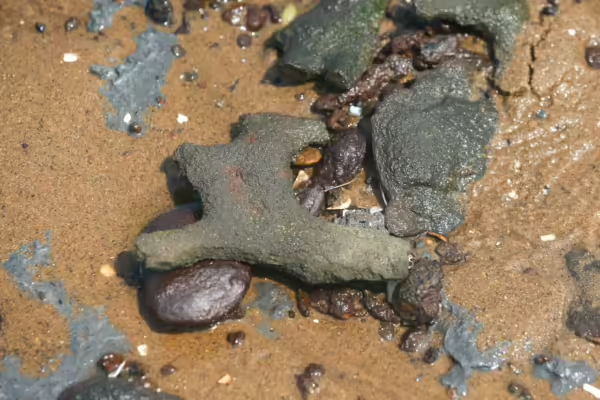Updates on Lead found on and in Keyport beach by Greg Remaud
July 22, 2024
NY/NJ Baykeeper Update on Lead found on Keyport Beach and in Raritan Bay
Thursday, July 18, 2024
- Yesterday late morning, without any reason to suspect any health risks, two grandparents and their three grandchildren were wading and fishing along the beach where the lead material lays.
When Baykeeper explained what was going on they immediately came out of the water. They were perplexed as to why no public warnings of potential health risks were posted. They also asked many thoughtful questions about where they should and should not go along the shore, whether or not to eat fish from the area.
These are all important questions- answers should be made available to the environmental agencies and elected officials immediately.
- Yesterday afternoon, Congressman Frank Pallone and Keyport Mayor Rose Araneo each visited the site where slag containing lead was found on the beach and at the bottom of Raritan Bay.
Friday, July 19th, 2024
Congressman Frank Pallone brought EPA representatives, NJDEP representatives, Keyport Mayor Araneo,and Harbor Commission representatives for the agency’s initial visit to the site led by NY/NJBaykeeper.
- EPA brought members of their site assessment team.
- NJDEP brought their Chief of Enforcement.
The outcome is that these parties will reconvene next week towards work on an action plan.
There are still no public warning notices, or basic restrictions on the small stretch of beach where lead material was found.
NJ Spotlight News came out to cover the story
Wednesday, July 24, 2024
There are still no signs posted
Monday, August 12, 2024
On Saturday August 8th Congressman Frank Pallone and the NJDEP notified the public that NJDEP removed numerous containers of the slag like material clustered on the beach and tested 10 samples of that material. Findings determined that the amount of lead in the material was below non-residential standards, but the amount of arsenic was above the standard of 19 ppm (parts per million), ranging from 12.7 to 128 ppm.
Arsenic can be naturally occurring in New Jersey’s geology, therefore the residential and non-residential soil remediation standards for arsenic is set at 19 parts per million. There were no exceedances of residential soil remediation standards for any metals in sand that was analyzed.
According to the Centers for Disease Control and Prevention, the CDC, arsenic “can be harmful to the eyes, skin, liver, kidneys, lungs, and lymphatic system.” Health impacts are largely tied to the level and duration of exposure.
Temporary signs were posted, while traditional signage is being created, to warn residents not to handle the material.
Investigations continue into the longstanding violation of failure to cap the landfill on site. As portions of the landfill on the Aeromarine property remain uncovered and are sloughing off and leaching its contents into Chingarora Creek and Raritan Bay.
